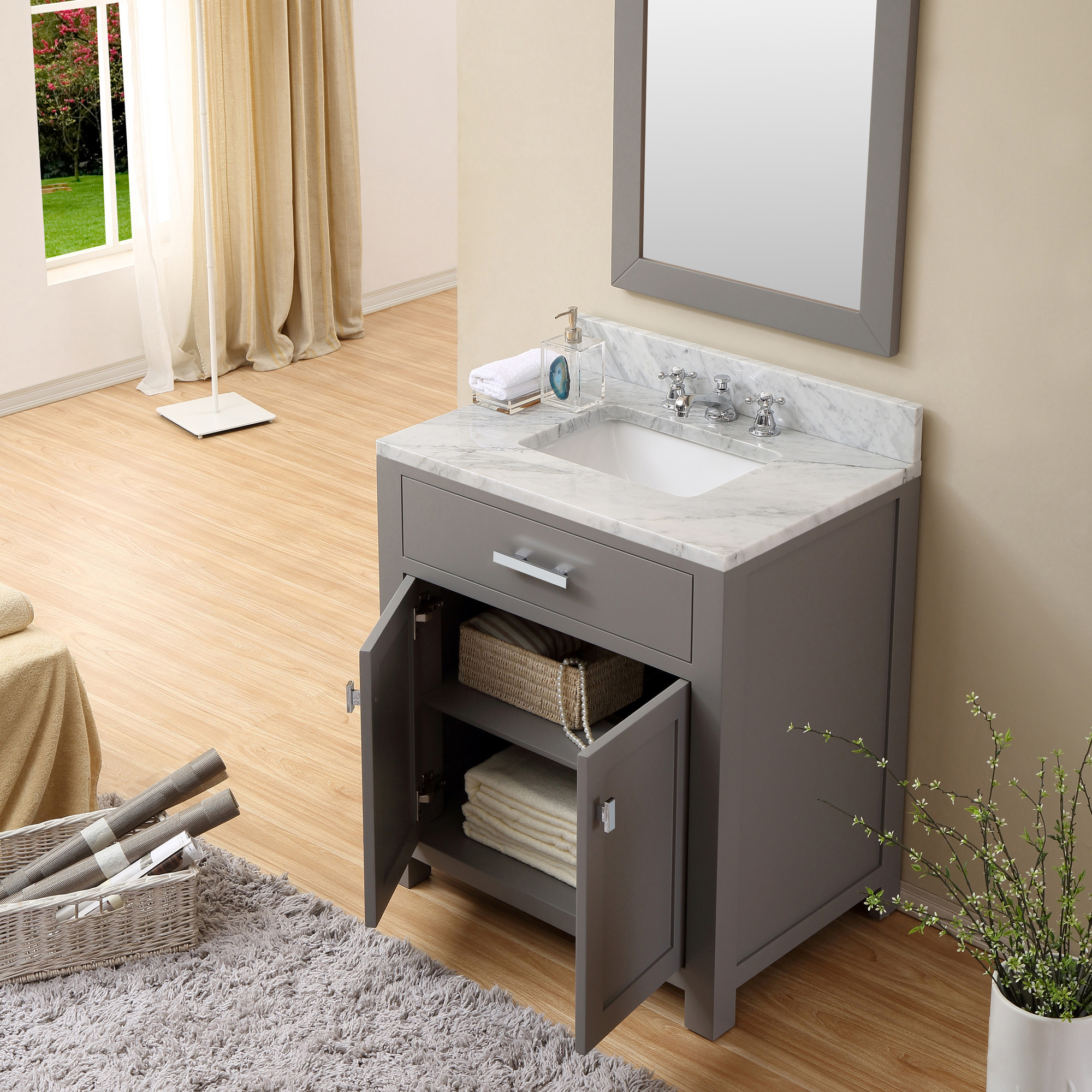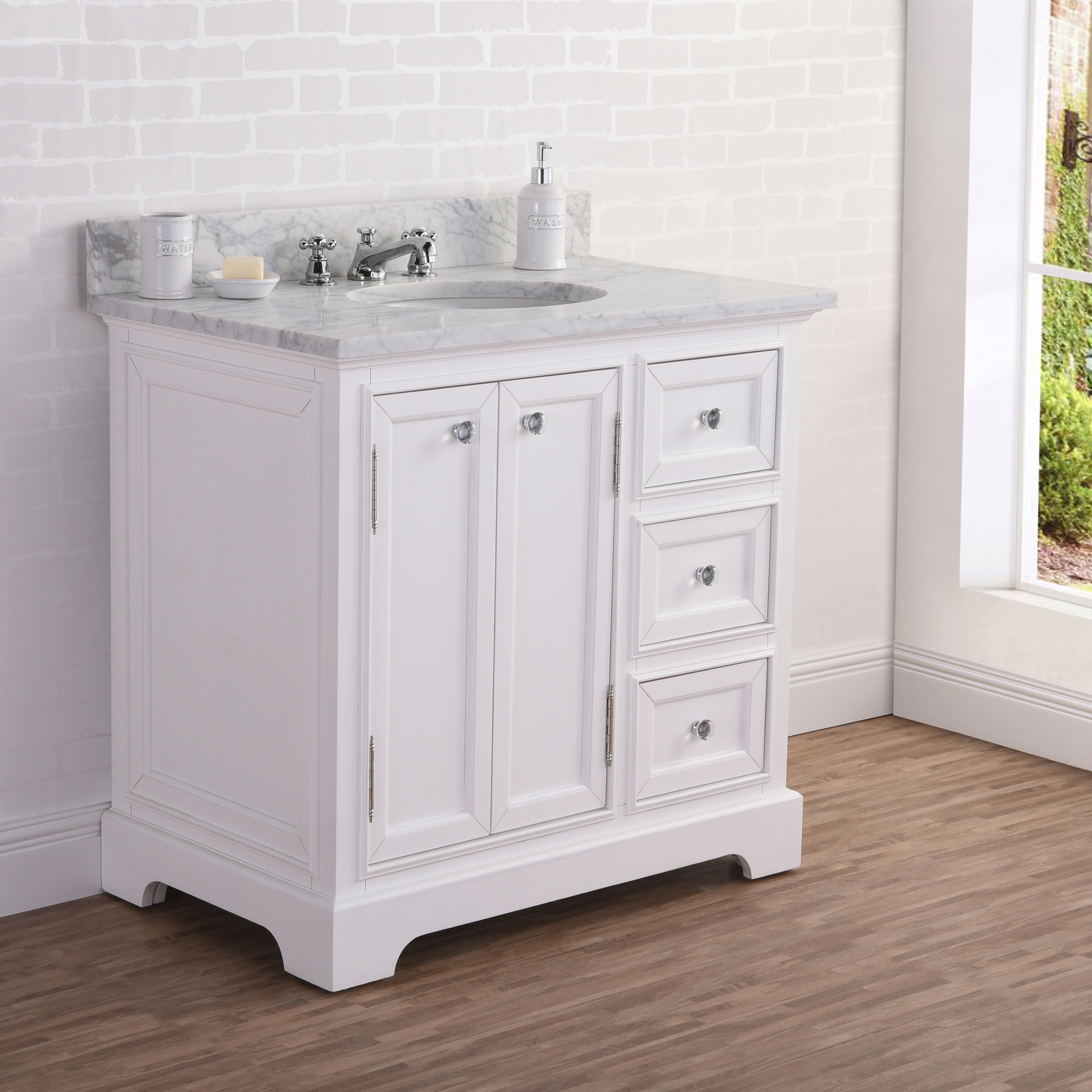Understanding the 24 Inch Bathroom Vanity Without Top

A 24-inch bathroom vanity without a top is a compact and stylish solution for smaller bathrooms or powder rooms. It offers flexibility in choosing your countertop and sink, allowing you to personalize your space. This type of vanity can be a practical and budget-friendly option for those looking to create a unique and functional bathroom.
Design Considerations and Space-Saving Aspects
A 24-inch vanity without a top provides a blank canvas for design. You can choose a countertop material that complements your bathroom’s style, from classic marble to modern quartz. The absence of a pre-installed sink allows you to select a vessel sink, undermount sink, or even a wall-mounted faucet for a sleek and minimalist look.
The compact size of this vanity makes it ideal for smaller bathrooms where space is limited. It can fit snugly in a corner or along a narrow wall, maximizing the available space. You can also use the wall above the vanity for storage by installing shelves or a mirror with built-in storage.
Comparison to Other Vanity Sizes
A 24-inch vanity without a top offers several advantages compared to other vanity sizes. It’s more affordable than larger vanities, making it a budget-friendly option. Its compact size is perfect for smaller bathrooms, maximizing space and creating a less cluttered feel.
However, it also has some limitations. It provides less storage space compared to larger vanities, which might be a concern for those with extensive bathroom necessities. It might not be suitable for larger bathrooms or those with a lot of counter space needs.
- Pros:
- Compact size
- Affordable price
- Flexibility in countertop and sink selection
- Space-saving design
- Cons:
- Limited storage space
- May not be suitable for larger bathrooms
- Wood: Wood is a classic choice for bathroom vanities, offering natural beauty, durability, and a warm feel.
- Advantages:
- Natural beauty and warmth
- Durability and longevity
- Customization options, including stain and paint finishes
- Disadvantages:
- Higher cost compared to other materials
- Susceptible to water damage if not properly sealed
- Requires regular maintenance, such as sanding and refinishing
- Advantages:
- Laminate: Laminate is a more affordable and durable option that mimics the look of wood.
- Advantages:
- Cost-effective
- Durable and resistant to scratches and water damage
- Wide variety of colors and patterns
- Disadvantages:
- Not as natural or elegant as wood
- Can be prone to chipping or peeling over time
- Limited customization options
- Advantages:
- Metal: Metal vanities are becoming increasingly popular for their modern and sleek look.
- Advantages:
- Modern and stylish design
- Highly durable and resistant to water damage
- Easy to clean and maintain
- Disadvantages:
- Can be cold to the touch
- More expensive than laminate
- Limited color and finish options
- Advantages:
- Traditional: Traditional vanities often feature ornate details, such as carvings, moldings, and distressed finishes. They typically have a classic and timeless appeal. Think of a vanity with intricate carvings, a warm wood finish, and a pedestal base.
- Modern: Modern vanities are characterized by clean lines, simple shapes, and minimalist designs. They often feature sleek materials, such as metal or high-gloss finishes. Imagine a vanity with a sleek, rectangular shape, chrome accents, and a floating design.
- Contemporary: Contemporary vanities blend modern elements with a touch of traditional style. They often feature clean lines, natural materials, and a focus on functionality. Picture a vanity with a simple design, natural wood veneer, and a spacious countertop.
- Prepare the area: Clear the area around the bathroom wall where you want to install the vanity. Remove any existing fixtures or decorations.
- Mark the wall: Use a level and a pencil to mark the location of the vanity on the wall, ensuring it’s level and centered.
- Attach the vanity to the wall: Use appropriate screws and anchors to secure the vanity to the wall, ensuring they are strong enough to support the weight of the vanity and the countertop you’ll be adding later.
- Install the plumbing: Connect the water supply lines to the vanity’s plumbing connections, and ensure the drain pipe is properly connected to the vanity’s drain.
- Test the plumbing: Turn on the water supply and check for any leaks. If you find any leaks, tighten the connections or replace any faulty parts.
- Choose a countertop material: There are various countertop materials available, including granite, marble, quartz, laminate, and solid surface. Each material has its pros and cons, so consider factors like durability, cost, and aesthetics. Granite is a popular choice for bathroom vanities, known for its durability and unique patterns.
- Measure the vanity: Measure the vanity top’s width and depth accurately to ensure the countertop fits perfectly.
- Cut the countertop: Depending on the material you choose, you may need to cut the countertop to fit the vanity. This is best done by a professional fabricator, as improper cutting can damage the countertop.
- Install the countertop: Once the countertop is cut, you can install it on the vanity. Use a sealant to secure the countertop to the vanity and prevent water damage.
- Choose a sink style: There are various sink styles available, including undermount, drop-in, and vessel sinks. Each style has its advantages and disadvantages. Undermount sinks are a popular choice for modern bathrooms, while drop-in sinks are more traditional. Vessel sinks add a unique design element and can be a statement piece.
- Install the sink: Once you’ve chosen a sink, you need to install it on the countertop. The installation process will vary depending on the sink style. For undermount sinks, you’ll need to cut a hole in the countertop to accommodate the sink and secure it from below. For drop-in sinks, you’ll simply place the sink in the cutout and secure it with clips or screws. For vessel sinks, you’ll need to place the sink on the countertop and secure it with a ring or other mounting hardware.
- Choose hardware: Consider the style of your vanity and bathroom when choosing hardware. Hardware includes knobs, pulls, towel bars, and other accessories. Choose hardware that complements the overall design of your bathroom.
- Install hardware: Once you’ve chosen your hardware, you can install it on the vanity. Use a drill to create holes for the hardware and install it using screws or other mounting methods.
Exploring Materials and Styles

Choosing the right materials and style for your 24-inch bathroom vanity without top can significantly impact its look, durability, and overall appeal. Let’s delve into the common materials used and popular design styles to help you make an informed decision.
Materials, 24 inch bathroom vanity without top
The most common materials used for 24-inch bathroom vanities without tops include wood, laminate, and metal. Each material has its own set of advantages and disadvantages.
Styles
24-inch bathroom vanities without tops are available in various styles to suit different preferences.
Installation and Customization

Installing a 24-inch bathroom vanity without a top is a DIY project that can save you money and give you a unique bathroom space. It involves a few steps and requires basic tools and materials.
Installing the Vanity
Before you start installing the vanity, ensure you have all the necessary tools and materials, including a level, tape measure, pencil, drill, screwdriver, and plumbing supplies. You’ll also need a helper to assist with lifting and positioning the vanity.
Choosing and Installing the Countertop
Once the vanity is installed, you can choose and install the countertop. This step allows for customization and adds a personal touch to your bathroom.
Choosing and Installing the Sink
The sink is an essential part of the bathroom vanity, and it’s another opportunity to customize the space.
Adding Hardware
Hardware can add a finishing touch to your bathroom vanity.
24 inch bathroom vanity without top – A 24-inch bathroom vanity without a top offers a versatile foundation for a custom bathroom design. You can choose a countertop material that complements your style and seamlessly integrate it into your overall vision. If you’re looking for a comprehensive guide to reimagining your bathroom space, check out this detailed resource on steps to redo bathroom.
Once you’ve planned your bathroom remodel, a 24-inch vanity without a top allows you to personalize your space with a unique countertop that reflects your individual taste.
A 24-inch bathroom vanity without a top offers a blank canvas for your design vision. You can choose a countertop that complements your style and needs, or even opt for a vessel sink for a more modern look. If you’re looking for a complete bathroom makeover, consider exploring complete bathroom suite deals which often include a vanity, toilet, and bathtub or shower.
A 24-inch vanity without a top can be a perfect starting point for creating a cohesive and stylish bathroom space.